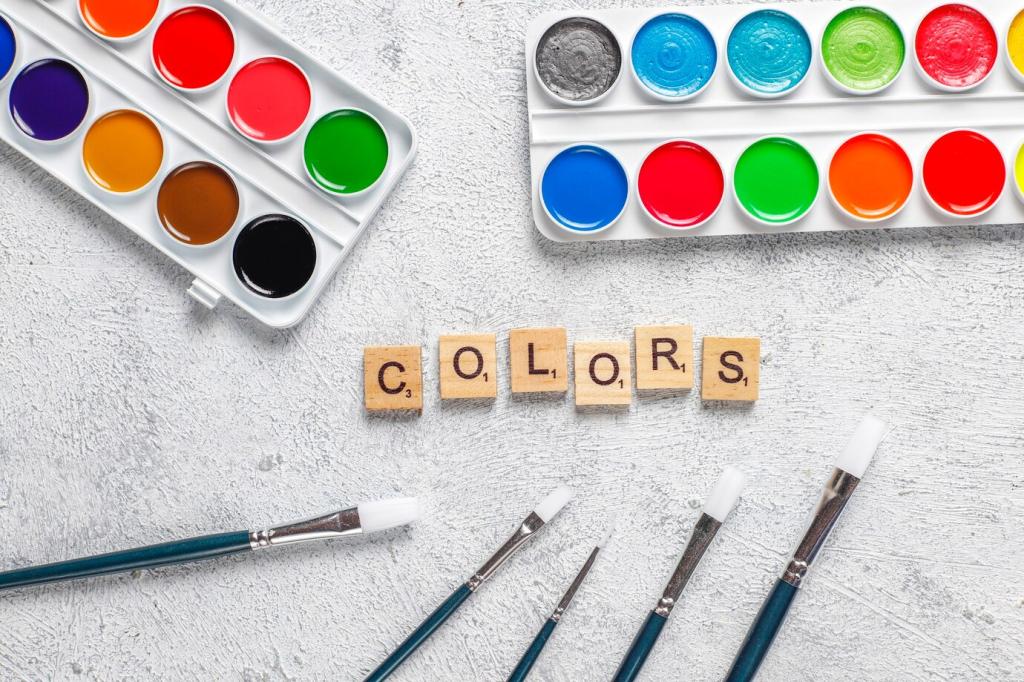
The Role of Neurons in Seeing Color
Chosen theme: Role of Neurons in Seeing Color. Step into the living circuitry of perception, where photons meet neurons and experiences bloom into color. Explore science, stories, and practical insights—and subscribe to keep learning with a curious, color-loving community.
Cones and Their Opsins
Your three cone types—short, medium, and long—house opsins tuned to different wavelengths. Their overlapping sensitivities let neurons compare signals, launching opponent codes that unlock color categories long before conscious awareness even notices them.
Rods at the Edge of Color
Rods are lousy with color yet essential at dusk, when their signals modulate cone pathways. That crosstalk shifts perceived hue and brightness, explaining why reds dim first and blues linger in twilight streets.
Opponent Signals Start Early
Horizontal and bipolar cells combine cone outputs into red–green and blue–yellow opponent pairs. By the time retinal ganglion neurons fire, edges and contrasts in color are already encoded for the brain’s next stations.
Paths Through the Brain: Retinal Ganglion to Cortex
Parvocellular and Koniocellular Highways
Midget ganglion neurons funnel fine spatial and chromatic detail to parvocellular layers, while small bistratified ganglion neurons feed koniocellular layers. Together they ferry delicate red–green and blue–yellow information to cortex with remarkable fidelity.
Double-Opponent Neurons in V1
In V1, double-opponent neurons marry color opponency with spatial opponency, preferring colored edges over uniform fields. That computation helps segment objects, keeping a ripe cherry distinct from its green leaf despite messy lighting.
Area V4 and Beyond
Area V4 contributes robust color tuning and constancy, but color is distributed: V2 thin stripes, posterior inferior temporal cortex, and even memory networks weigh in. When they disagree, colors look unstable or strangely artificial.
Color Constancy: Neurons That Correct the Light
Discounting the Illuminant
Neurons adapt to ambient illumination, effectively estimating and discounting the light source. This recalibration shifts receptor gains and cortical weighting, allowing a white shirt to stay white under sunset amber or bluish shade.
Edge Integration and the Retinex Idea
By comparing edges across space, circuits implement something like Land’s Retinex, inferring surface reflectance from relative contrasts. That’s why gray tiles can appear wildly different behind shadows, yet measurements insist they are identical.
Anecdote: The Office Fruit Bowl
At our office, bananas under a blue-tinted window looked dull until someone moved one near a warm lamp. Conversations blossomed about neurons recalibrating context, and suddenly everyone noticed constancy working behind the scenes.
Development and Plasticity: How Color Circuits Mature
Infancy and Critical Tuning
Newborns’ cones are short and sparse, and early retinal circuits are still refining connections. Over months, sensitivity improves and LGN stripes sharpen, enabling reliable neuronal comparisons that carve the first stable color categories.

Emotion, Memory, and Meaning: When Color Matters
Salience and the Amygdala
Neuronal circuits tag colors with value; warm hues often gain priority via attentional networks and amygdala pathways. Dopamine and norepinephrine tweak gain, making that red notification badge nearly impossible to ignore.


Synesthesia and Cross-Activation
In grapheme–color synesthesia, atypical coupling between color-selective cortex and symbol areas yields consistent hues for letters or numbers. Imaging reveals stronger structural links and synchronized rhythms supporting these vivid, involuntary color experiences.



